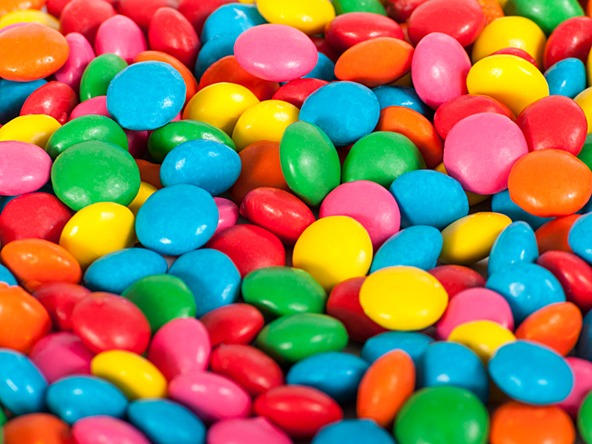Stories from the Archive: Sweet treats

'A finger of Fudge is just enough to give your kids a treat. A finger of Fudge is just enough, until it’s time to eat.'
If, like me, you are of a certain age, you can probably hear the tune in your head right now. Great advertising and very catchy, but it’s hard to imagine a brand nowadays that would promote a chocolate bar as something for children to fill up on between meals. Milky Way advertising was even more explicit, with the strapline: ‘The sweet you can eat between meals without ruining your appetite.'
A lot has changed since the 1970s and ‘80s when these ads were around, but research in the Archive of Market and Social Research shows that less has changed than you might think. The advertisers of the time were not appealing directly to the sweet consumer, but to the sweet buyer: the housewife. And although we would now say ‘the parent’ instead, qualitative research in the Archive shows the underlying feelings and drivers around children and sweets have not changed at all.
The CRAM collection is a set of commissioned market research reports originally delivered by Cooper Research and Marketing. CRAM was set up by Peter Cooper and his wife in 1966 and drew on Peter’s academic psychology background to find a way to allow companies to better understand modern consumers – an ambition that most of us would still embrace today.
The Archive contains an extensive collection of CRAM research – a treasure trove for anyone interested in consumer behaviour and how we have changed, or not, over the last 70 or so years.
Reports from the collection tell us that sweets act as gifts, rewards and treats; they can keep children quiet or, indeed, to help fill them up. For parents, there is a tension between wanting to make children happy and wanting to limit their intake that would be very familiar today, although the health concerns tended to focus on tooth decay rather than obesity.
For children, there is the desire to eat as many sweets as possible, to get good value for their pocket money and, as they get older, to get the sweets that are seen as ‘cool’ and desirable.
And for parents, another tension: saying ‘no’ to your child while eating the sweets yourself, often in larger quantities, as these respondents from a 1973 study for Rowntree Mackintosh show.
"I buy myself a box of Smarties nearly every day, I like to eat them by the handful.” (Mother of three)
"I have my own box; the kids aren’t allowed mine.” (Mother of two)
The research was aimed at evaluating an alternative to standard Smarties, in the form of Smarties with faces printed on them but, as with so much qualitative research, the insights went far beyond the original objective. For example, the study showed that children use sweets to play with – motivated in this case by the Smarties faces; sweets are not ‘just’ products to small children and can switch category between toy and food, almost seamlessly.
Even the packaging can be fun. Anyone who has ever survived crafting with toddlers will know the value of the Smarties tube. The report says that ‘the tubes made acceptable funnels, necklaces, telescopes, etc'.
“My kids like to bang the middle with the side of their hand and see the lid fly off.” (Mother)
Children also attach different meanings to sweets as they get older. Older children are more aware of which sweets are ‘cool’ which sometimes means they opt to spend their money on one premium chocolate bar, whereas smaller children tend to go for quantity over quality, choosing cheap and cheerful sweets. For example, one seven-year-old girl said: “You get more if you buy lots of little things. One big thing goes ever so quickly.”
Today’s confectionery messaging may be more subtle and nuanced that that of 50 years ago, but as this collection of nuggets of insight gold shows, human nature – and desire for sugar – has not changed at all.
Judith Staig is a freelance writer
The Archive of Market and Social Research (AMSR) is a free, searchable, digital resource including qual and quant data, research reports, papers, industry magazines and publications.

We hope you enjoyed this article.
Research Live is published by MRS.
The Market Research Society (MRS) exists to promote and protect the research sector, showcasing how research delivers impact for businesses and government.
Members of MRS enjoy many benefits including tailoured policy guidance, discounts on training and conferences, and access to member-only content.
For example, there's an archive of winning case studies from over a decade of MRS Awards.
Find out more about the benefits of joining MRS here.













0 Comments